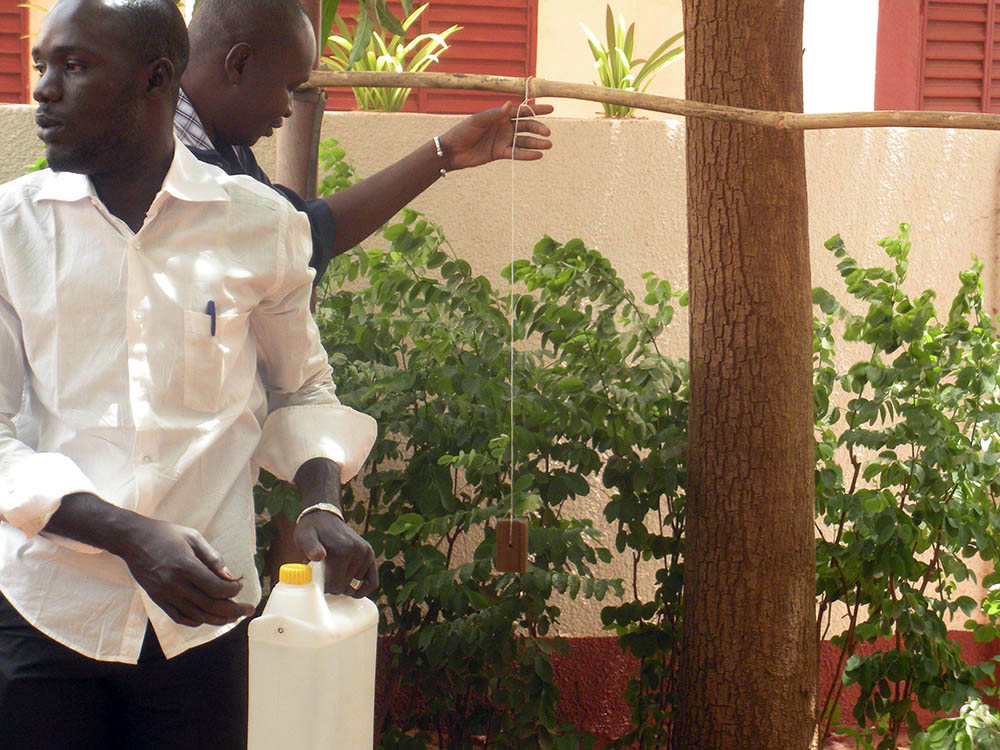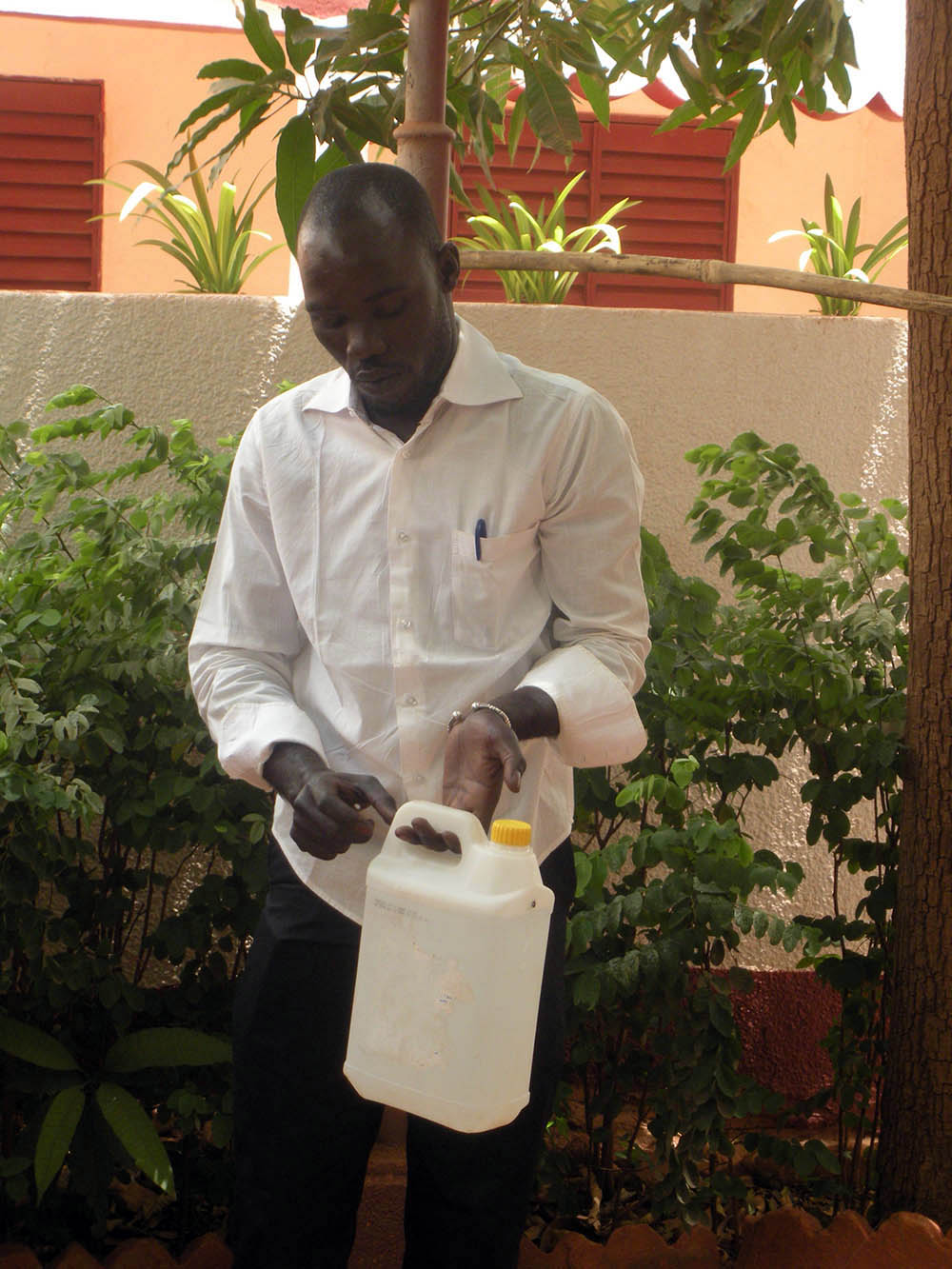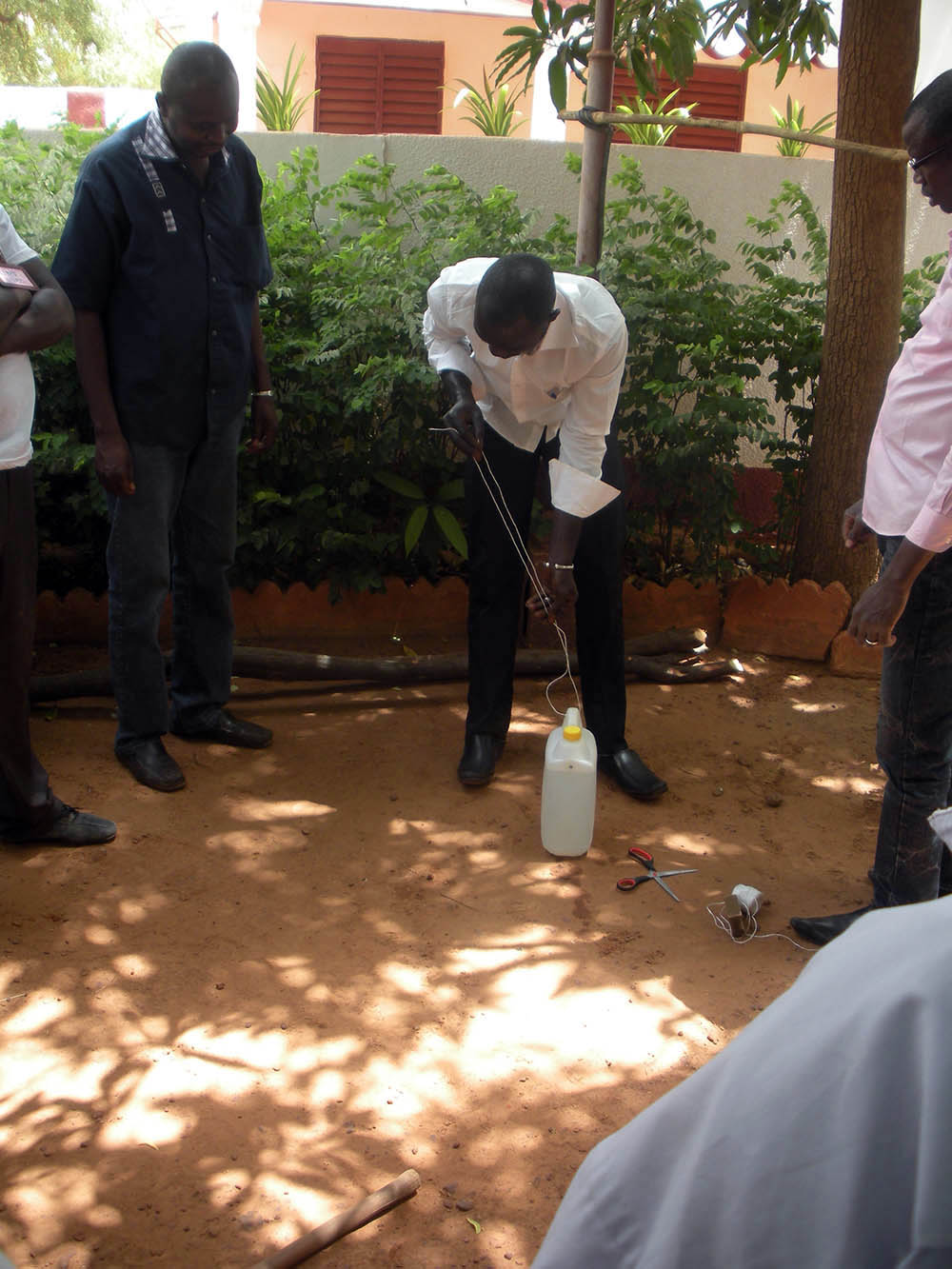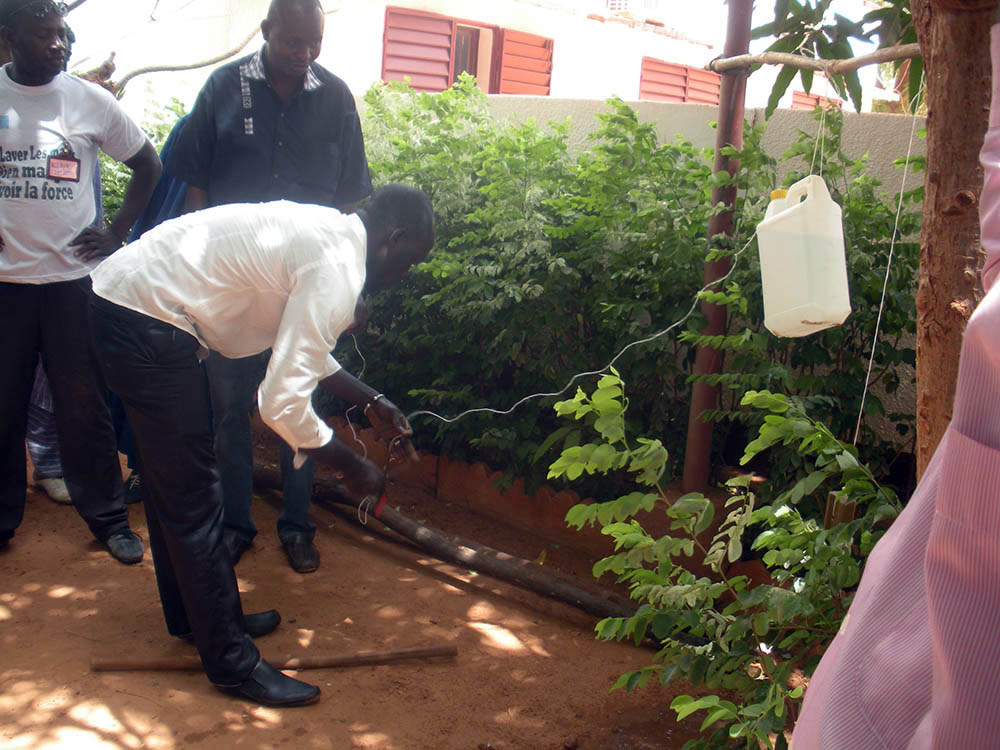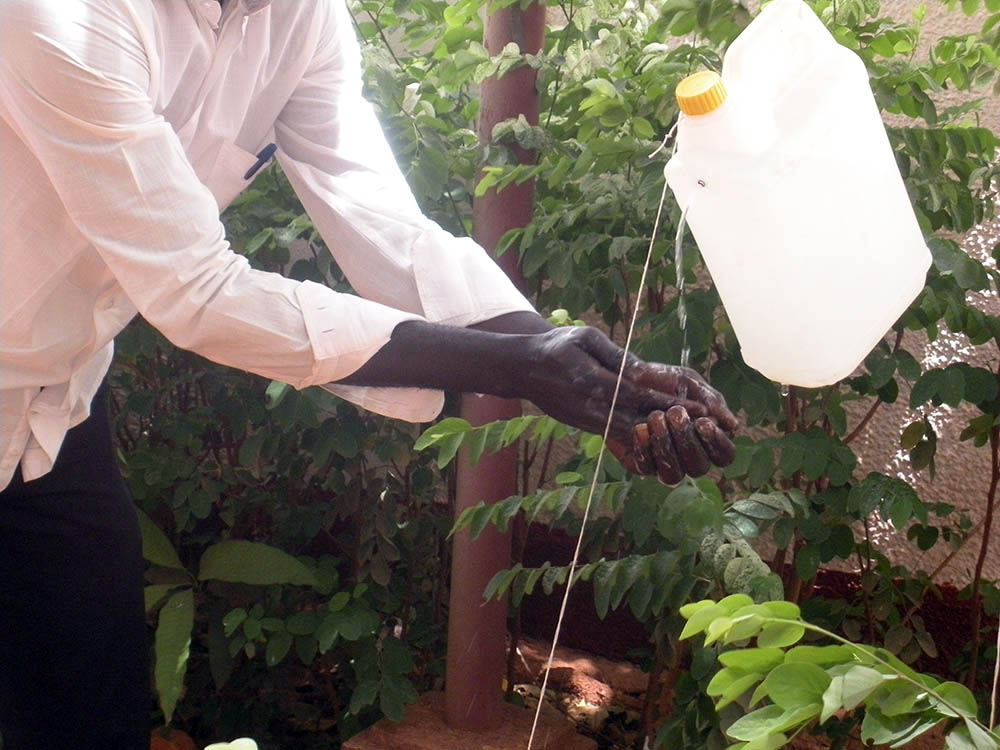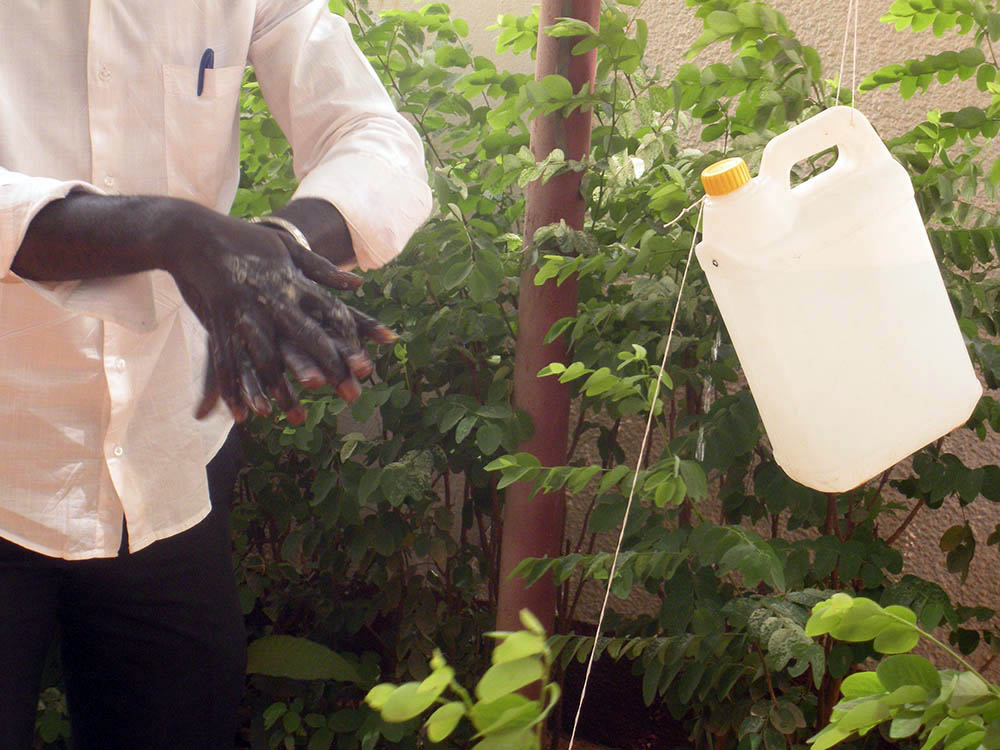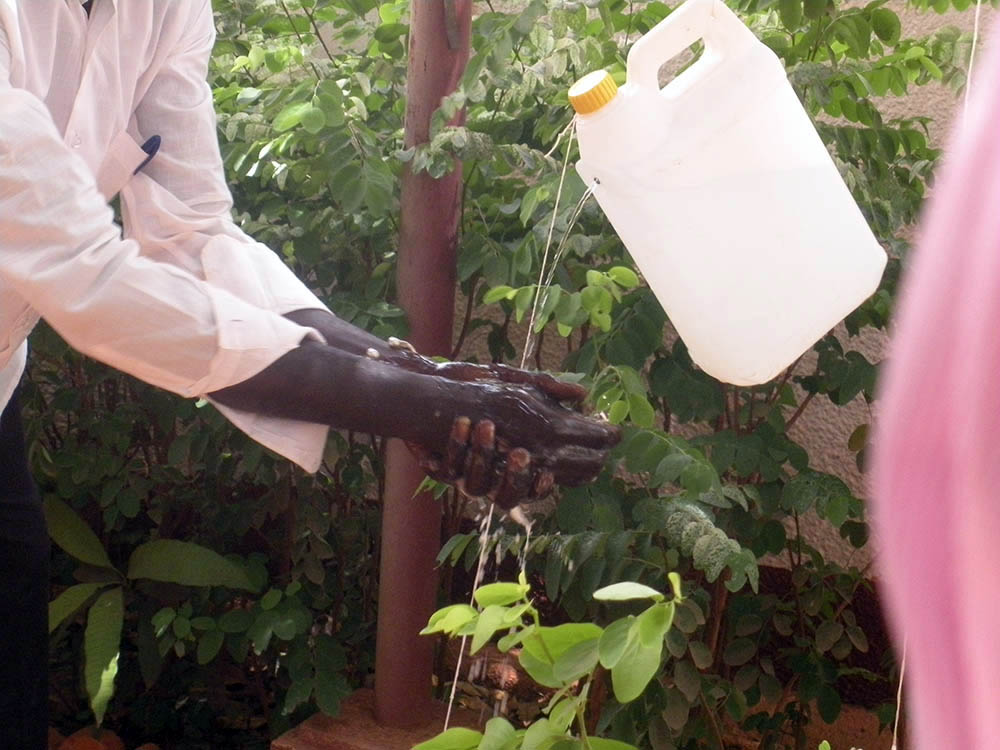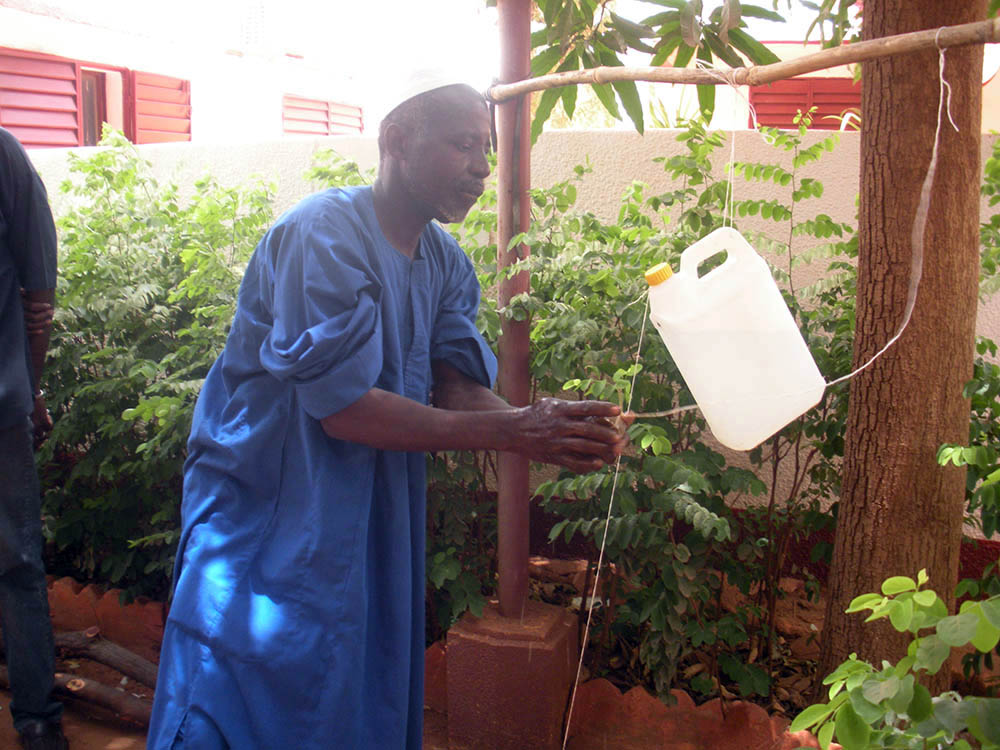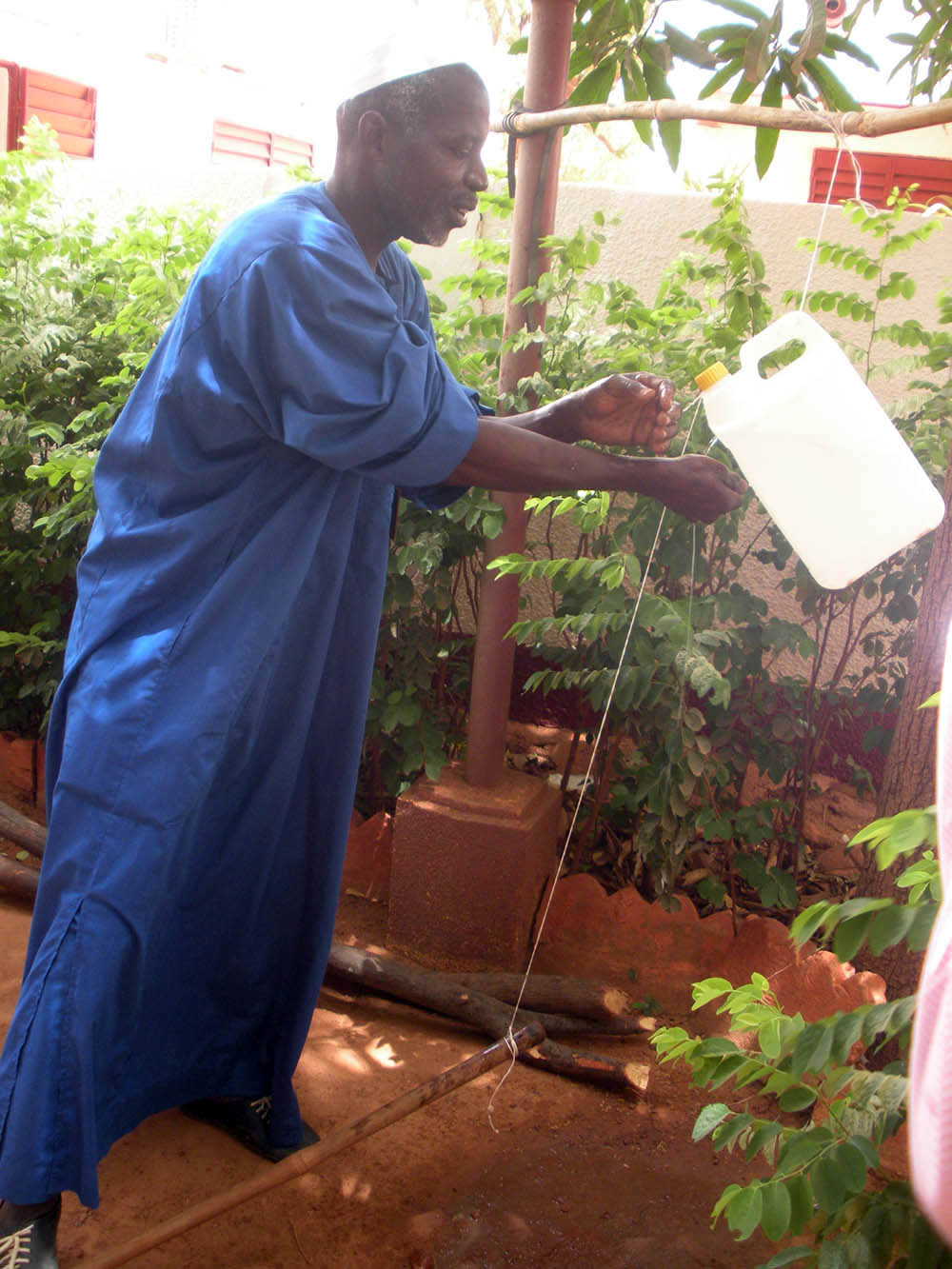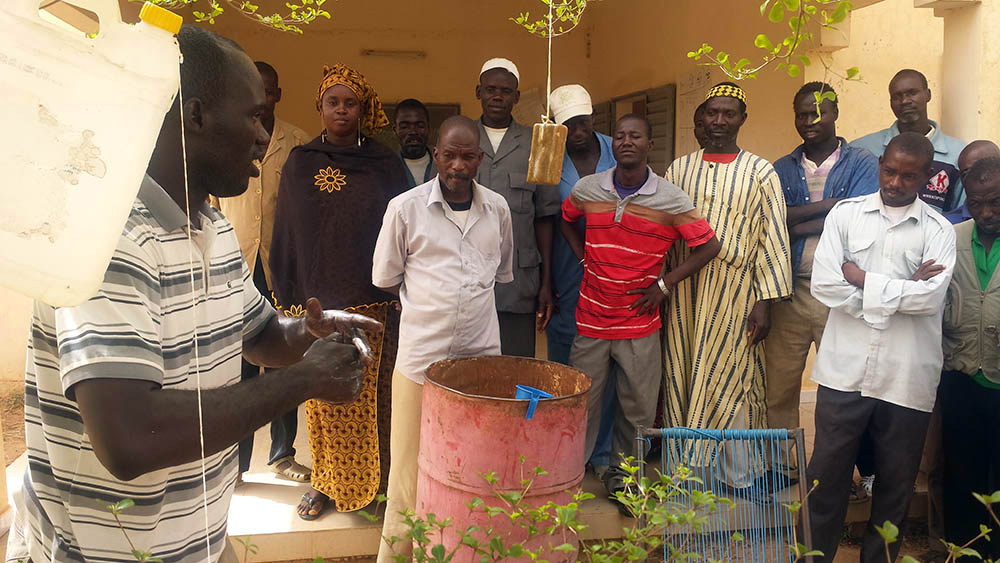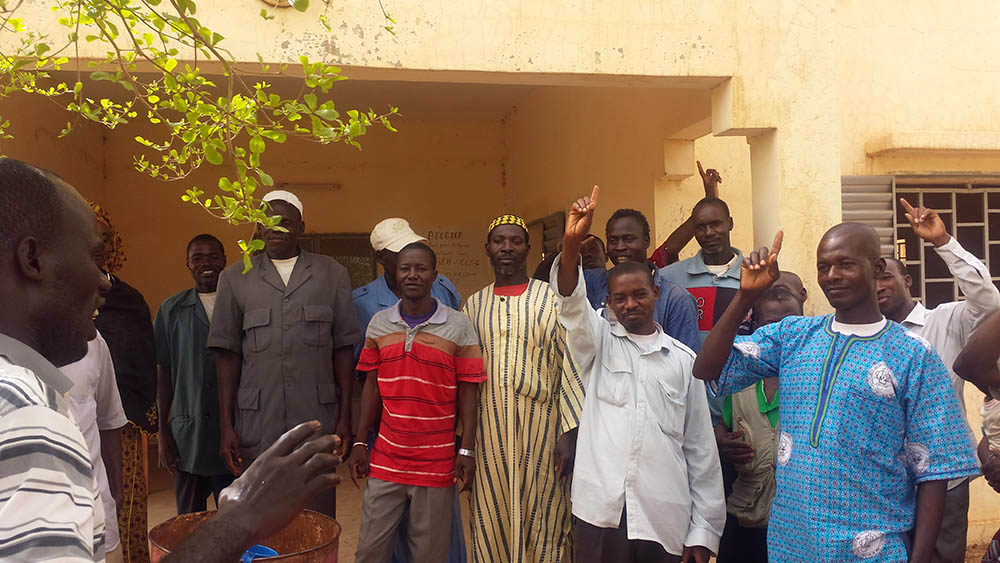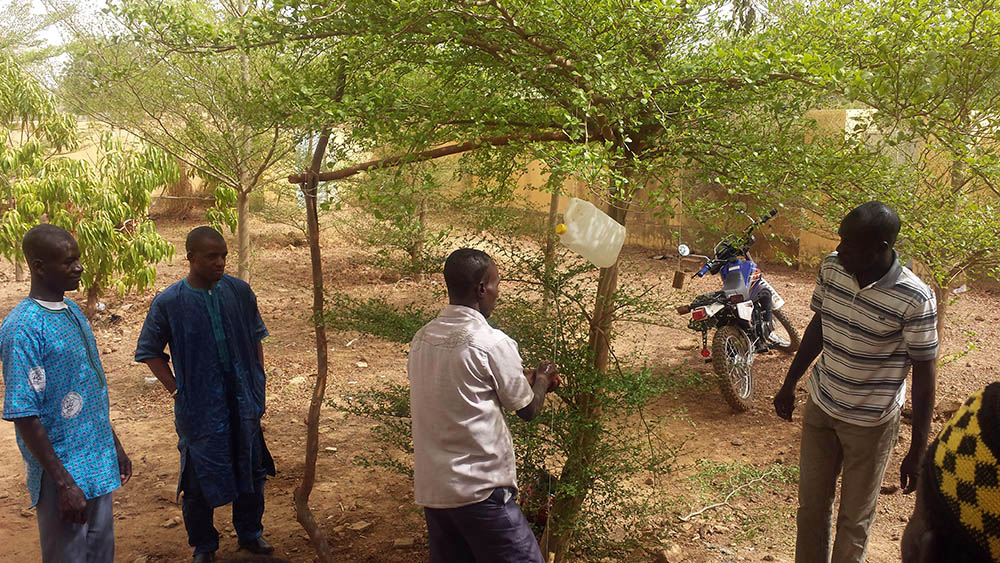The creation and use of tippy taps to promote handwashing was incorporated into SPRING training in gardening, essential nutrition actions/essential hygiene actions (ENA/EHA), and community-led total sanitation (CLTS). From 2015-2016, we trained 5,500 people in gardening, 375 facility staff in ENA/EHA, helped establish 200 community-level ENA/EHA support groups, and triggered 26 communities in CLTS. We encouraged families to install a tippy tap near both latrines and kitchens to encourage handwashing at all appropriate times. As a result, 4,686 tippy taps were built in the 100 villages targeted by SPRING in the Feed the Future Zone of Influence in the Mopti Region.
